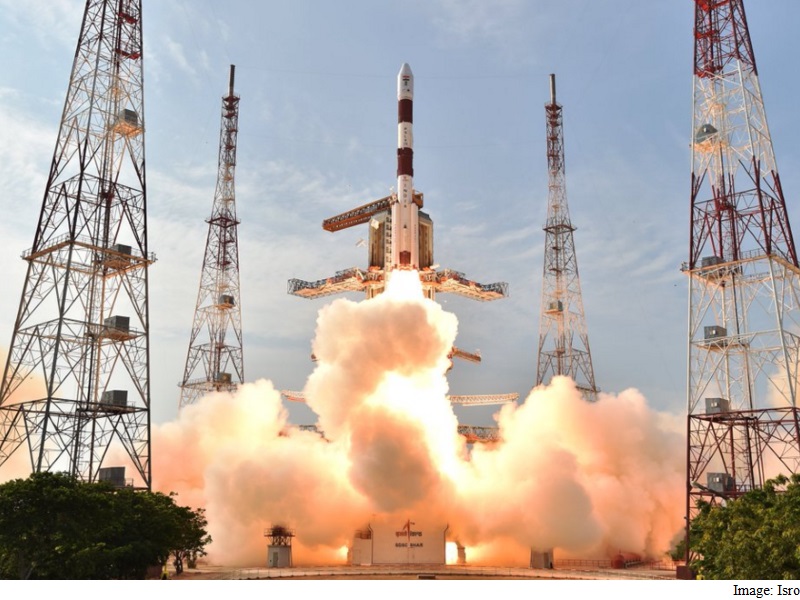- Home
- Science
- Science News
- Isro Successfully Launches Final IRNSS Navigation Satellite
Isro Successfully Launches Final IRNSS Navigation Satellite

The PSLV-XL standing 44.4 metre tall and weighing 320 tonnes, tore into the afternoon skies at 12.50 p.m. breaking free of the earth's gravitational pull.
Named the Indian Regional Navigation Satellite System (IRNSS), it consists of a constellation of seven satellites of which six - IRNSS-1A, IRNSS-1B, IRNSS-1C, IRNSS-1D, IRNSS-1E and IRNSS-1F- have already been put into orbit.
The seventh satellite in the series - IRNSS-1G - weighing 1,425 kg is expected to soon join the other six.
Just over 20 minutes into the flight, the rocket would put IRNSS-1G into orbit at an altitude 497.8 km.
The satellite's life span is 12 years.
Prime Minister Narendra Modi also congratulated Indian space scientists after a successful launch of the country's seventh navigation satellite that blasted off from the spaceport of Sriharikota.
"Our scientists have achieved many accomplishments. Through space science, lives of people can be transformed. India has launched seven navigation satellites which have been successful," he said in a televised address.
He said the successful launch of the satellite, which guarantees India's indigenous satellite navigation system, was a "precious gift by Indian scientists to the people of the country".
"Our efforts will not only help India but can help fellow Saarc nations as well," Modi said.
Catch the latest from the Consumer Electronics Show on Gadgets 360, at our CES 2026 hub.
Related Stories
- Samsung Galaxy Unpacked 2025
- ChatGPT
- Redmi Note 14 Pro+
- iPhone 16
- Apple Vision Pro
- Oneplus 12
- OnePlus Nord CE 3 Lite 5G
- iPhone 13
- Xiaomi 14 Pro
- Oppo Find N3
- Tecno Spark Go (2023)
- Realme V30
- Best Phones Under 25000
- Samsung Galaxy S24 Series
- Cryptocurrency
- iQoo 12
- Samsung Galaxy S24 Ultra
- Giottus
- Samsung Galaxy Z Flip 5
- Apple 'Scary Fast'
- Housefull 5
- GoPro Hero 12 Black Review
- Invincible Season 2
- JioGlass
- HD Ready TV
- Laptop Under 50000
- Smartwatch Under 10000
- Latest Mobile Phones
- Compare Phones
- OPPO Reno 15 Pro Max
- Honor Win RT
- Honor Win
- Xiaomi 17 Ultra Leica Edition
- Xiaomi 17 Ultra
- Huawei Nova 15
- Huawei Nova 15 Pro
- Huawei Nova 15 Ultra
- Asus ProArt P16
- MacBook Pro 14-inch (M5, 2025)
- OPPO Pad Air 5
- Huawei MatePad 11.5 (2026)
- Xiaomi Watch 5
- Huawei Watch 10th Anniversary Edition
- Acerpure Nitro Z Series 100-inch QLED TV
- Samsung 43 Inch LED Ultra HD (4K) Smart TV (UA43UE81AFULXL)
- Asus ROG Ally
- Nintendo Switch Lite
- Haier 1.6 Ton 5 Star Inverter Split AC (HSU19G-MZAID5BN-INV)
- Haier 1.6 Ton 5 Star Inverter Split AC (HSU19G-MZAIM5BN-INV)

















